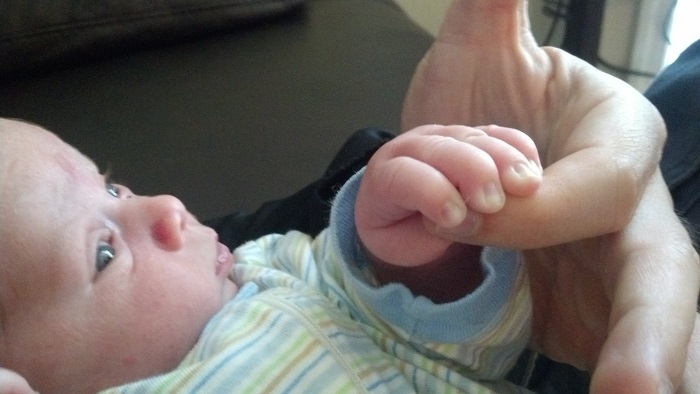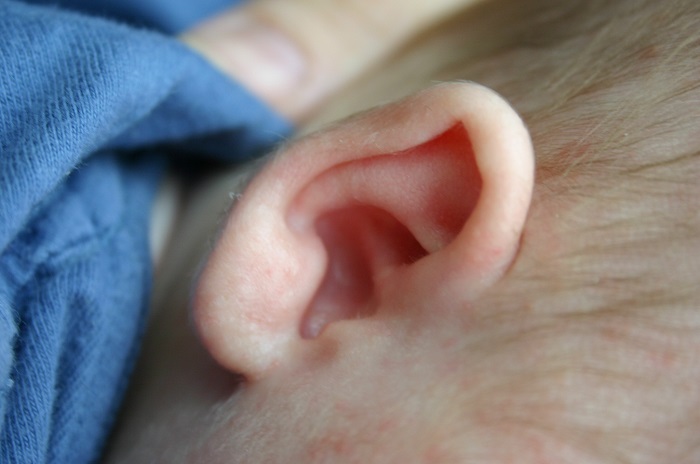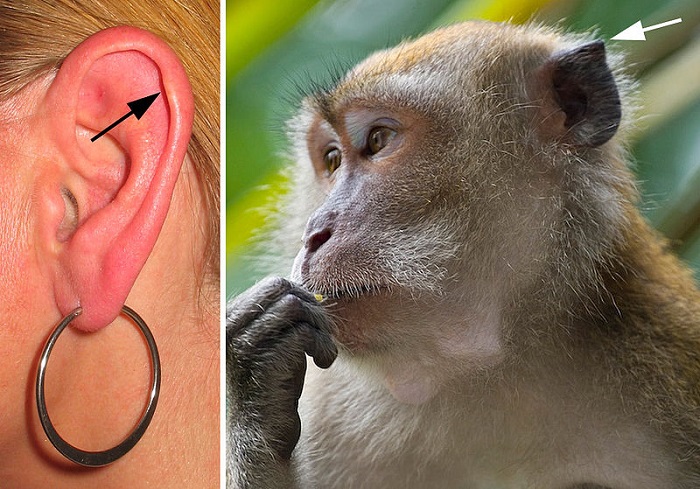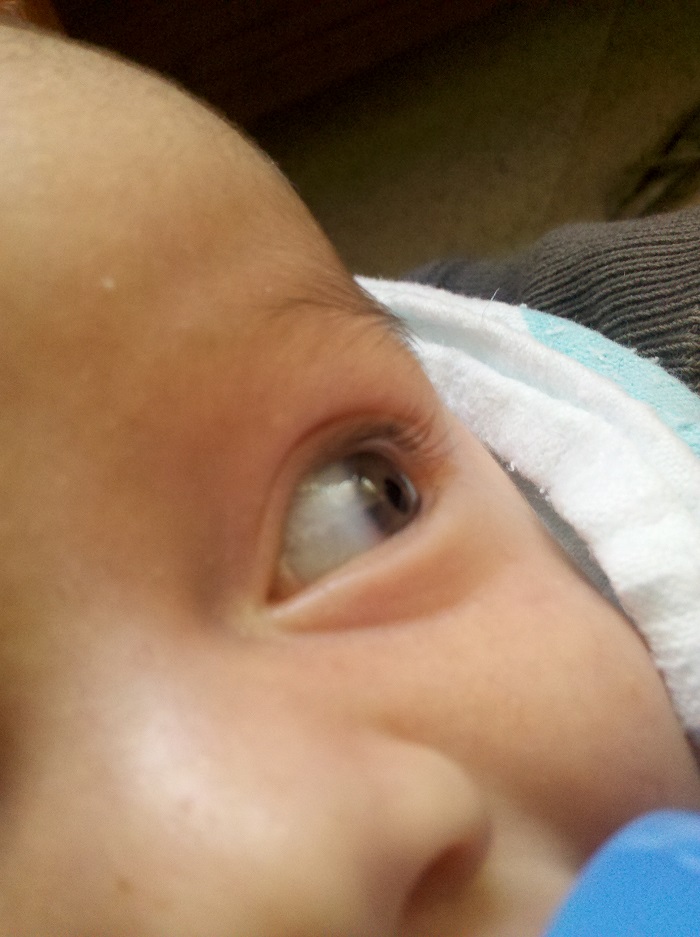Want to get closer to your primal beginnings? Have kids. During nine-months of pregnancy, you will learn about all the evolutionarily-influenced mechanics of giving birth, from the fetal acrobatics involved in maneuvering an enormous head required to house our big brains through a birth canal constrained in size so that human females can walk upright. Next time you look at a newborn baby, take a moment to appreciate these many echoes to our primitive origins.
Lanugo

Lanugo
Jerry Coyne’s Why Evolution is True explains not only the beauty of this peach fuzz that covers a newborn’s face the way it covers our primate relatives, but it also illustrates the how evolution works by “layering” over existing structures or by changing direction during embryonic development:
One of my favorite cases of embryological evidence for evolution is the furry human fetus. We are famously known as “naked apes” because, unlike other primates, we don’t have a thick coat of hair. But in fact for one brief period we do—as embryos. Around sixth months after conception, we become completely covered with a fine, downy coat of hair called lanugo. Lanugo is usually shed about a month before birth, when it’s replaced by the more sparsely distributed hair with which we’re born. (Premature infants, however, are sometimes born with lanugo, which soon falls off.) Now, there’s no need for a human embryo to have a transitory coat of hair. After all, it’s a cozy 37 degrees C in the womb. Lanugo can be explained only as a remnant of our primate ancestry: fetal monkeys also develop a coat of hair at about the same stage of development. Their hair, however, doesn’t fall out, but hangs on to become the adult coat. And, like humans, fetal whales also have lanugo, a remnant of when their ancestors lived on land.
Palmar Grasp and Plantar Reflex

Palmar Grasp
Give your finger to a newborn, and you will find they have a remarkably strong grip. You can see the fingers in this photo going white as they try to hold on. This instinct is a holdover from when our ancestors were much more hairy, and an iron grip on that hair reduced the chances of being dropped. A similar instinct occurs in the feet, which curl when tickled, from when our ancestors had feet that could grasp.
Darwin’s Tubercle

Darwin’s Tubercle

Darwin’s Tubercle
Our ancient ancestors had pointy ears, and we retain just a barely perceptible point in our own ears in adulthood. I’ve found newborn ears fascinating in the way they are still unfolding–so simian in appearance before growth rounds them out.
The Plica Semilunaris

Plica Semilunaris
Infant eyes are very large in proportion to their heads. This makes it easier at times to appreciate this little fleshy spot in the corner of our eyes (and all the eye-boogers they produce). This is the remnant of our ancestors’ nictitating membrane, or “third eyelid” found in reptiles.
Rooting Reflex and Downward-Pointing Nose

Smother-Resistant Nose
Bjørn Østman’s Pet Theory about the Human Nose and Breastfeeding really groked with me, having read it right after the birth of our second son. If humans had noses like chimpanzees, flat nostrils on our faces, we would suffocate during infancy–smothered by our mothers’ pronounced breasts, but the human nose can be pressed flat against the flesh and still allow air to pass. My wife, Vicky learned about this at a breast-feeding session she attended while we were at the hospital.
The Triune Brain
Infants have fontanelle, their skulls are made of bony portions connected by flexible membranes. This is most noticeable in the soft-spot on the top of a baby’s head. These membranes allow for the brain to grow and expand faster than bone can grow to accommodate it.
As mentioned above, evolution works with existing structures, often layering over what has come before. This is very apparent in the human brain, which includes the reptilian complex, paleomammalian complex, and neomammalian complex each layered one on top of the other, providing higher and higher levels of brain function. Or as Kim Stanley Robinson put it in his book 2312:
evolution conserves things that work. We have a conserved brain, with different ages for its different parts—in effect lizard at back and bottom, mammal in the middle, human at the front and top. Lizard brain to breathe and sleep, mammal brain to form packs, human brain to think it over
The mind of an infant growing into an adult is a peek at how our ancestors thought.
Comments
One response to “Evolutionary Wonders in a Newborn Baby”